Well, now he’s done it. I was fool enough to rise to the absurd challenge of dabrownman the other day. He can be a bit like that mean childhood cousin from out of town who visits and convinces me to stick a fork into an electrical socket. Well, I’m past that age, thankfully (I think), but I still fell for the old fork-in-the-socket routine. Ouch!
The challenge was of the order of txfarmer’s 105% hydration Whole Wheat baguettes using a liquid rye levain. I don’t know if txfarmer used freshly ground grain or not, and she also added 15% barley flour, neither of which I possess. Ian (isand66) informed me recently that freshly ground whole grain flours are much thirstier than that packaged stuff that I use.
I had some pretty good success with PiPs 102% whole wheat sesame seeded batard which I did an admirable job on recently, so I was feeling my oats. I was up for roughing it. And rough it was.
- Making the liquid rye levain was a dream compared to the remainder of the tasks laid out like little bear traps before me.
- The overnight autolyse of ice water and whole wheat flour went off without a hitch, except for the decided goopiness of the mix.
- The 2nd day was the mixing: almost pure soup. French folds surprisingly went okay for maybe the first 20-30 folds, and then all heck broke loose. I was trying to corral the droopy stew of a dough with each attempt at a fold.
- I did 5 or 6 letter folds, and with each one, a ray of hope peeked through the dark clouds of this whole wheat soup. The dough was rising and starting to tighten.
- Into the refrigerator for a 2 hour retard.
- Divide, pre-shape and shape. A virtual laughathon.
- With a stroke of near genius (or desperation) I placed the “shaped” baguettes on floured parchment paper which itself resided on the couche. Cradling each baguette between channels of the couche supported parchment, the whole deal was covered and placed into the refrigerator for what became a ~28 hour retard. There was no way these weren't going to otherwise be permanently attached to the couche.
- I had a vague feeling of hope when the I scored the baguettes. The parchment went directly into the oven as is.
- 12 minutes of steam, and then when I went to rotate the baguettes, I found that they had decided to take up permanent residence on the parchment – they were stuck. And so I continued to bake them just that way.
As it turns out, I pulled them way too soon as the inside was still quite moist from all of that hydration about a half hour later. Now, those of you who have seen my baguettes know that I can make some pretty good stock much of the time, but these were like little devils just waiting with their pitchforks poised just to give me a good comeuppance. I want challenges that have a potential end game, not the relatively unattainable.
I’ll never do that again! Ridiculous. And hey, dabrownman, don’t try that again, ya hear!!!
The best step in the process - the levain ready to go.
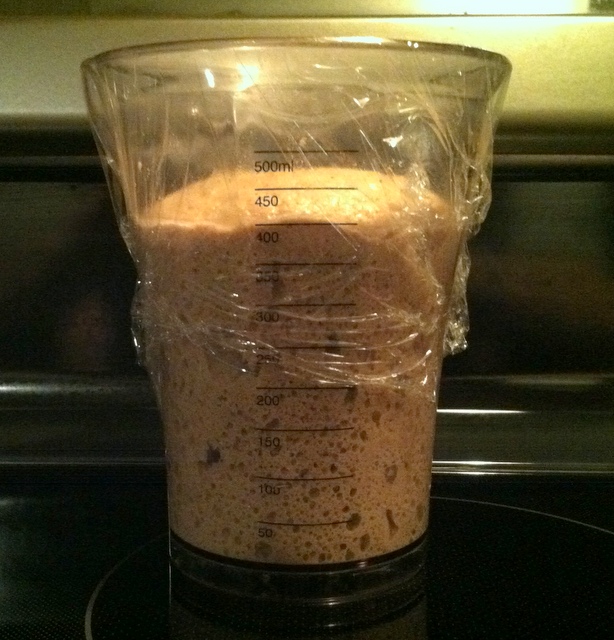
The parchment paper solution, and how they napped overnight...
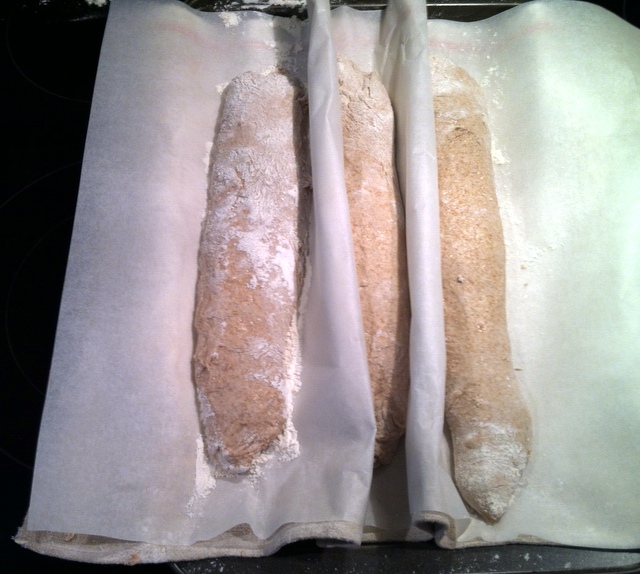

Steam released, rotated and still holding tight to the parchment
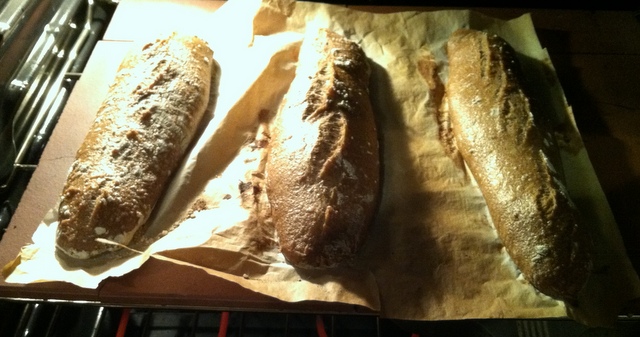
Don't try this at home, kids
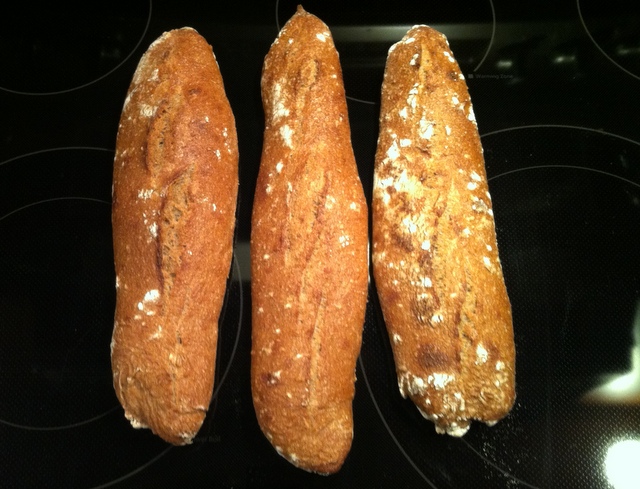
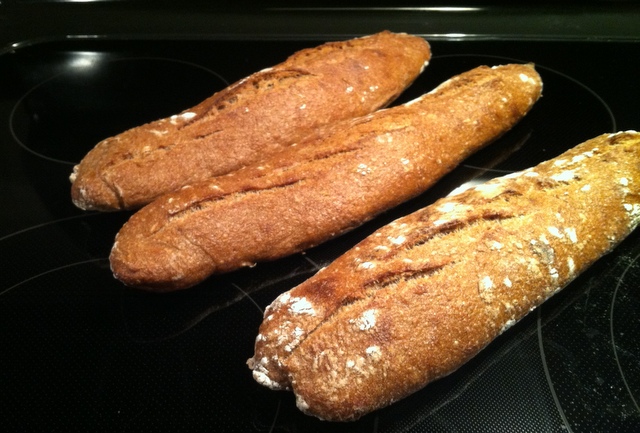
Some open crumb, but not really. They could have used another 5 or more minutes to shed a lot more water. These are quite heavy due to their water retention.
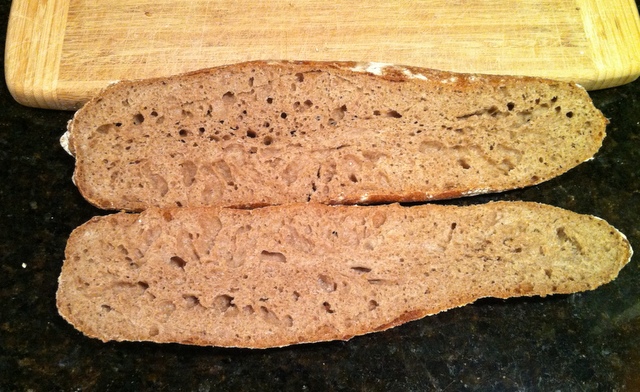
Oh well. And just like the 102% hydration WW batards, the smell and flavor is a bit reminiscent of a cross between a farm and a health foods store ;-) . Time to get a new levain up to par and prepare to bake something that I can do!
alan